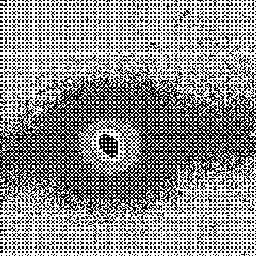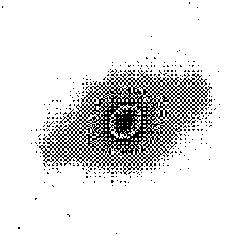


4.6. Bars within bars
Secondary bars form through decoupling (Friedli & Martinet 1993, Combes 1994). The second bars rotate with a much faster angular velocity, and are observed with a random angle from the primary bar (see fig 11). To avoid chaos, the two bars have a resonance in common. It is frequent that the ILR of the primary coincides with the corotation of the secondary. Multiply periodic particle orbits have been identified in such time-varying potentials (Maciejewski & Sparke 1997). It is possible that the two bars exchange energy with each other, through non-linear coupling; then m = 4 and m = 0 modes are also expected, and these have been seen in simulations (Tagger et al. 1987, Masset & Tagger 1997). Even then, the life-time of the ensemble is rather short, a few rotations. But the nuclear bars could help to prolonge the action of the primary bar towards the nucleus (as first proposed by Shlosman et al. 1989).

|

|
Figure 11. Examples of nuclear bars seen in the NIR bands: left: NGC 1433 in H; right: NGC 2217 in H; the field of view of both images is 2 x 2 arcmin, from Jungwiert et al (1997). |